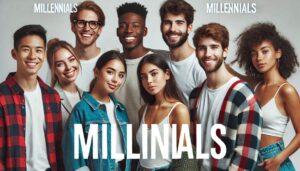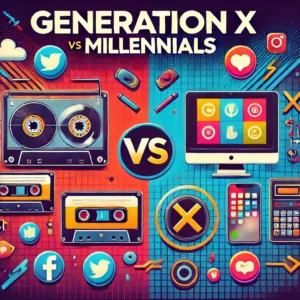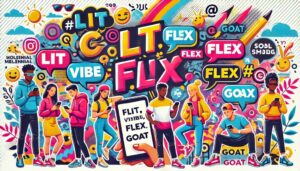No products in the cart.
Life Style
Millennial Types: A Deep Dive into the four types of millennials
Millennials. The label is ubiquitous. It’s used in marketing, in news reports, and everyday conversation. But is “millennial” truly a useful category on its own? Increasingly, experts argue no. The generational span of “millennial types” – roughly 1981 to 1996 – encompasses too many societal shifts and personal experiences to be considered a single, unified group. Instead, understanding the nuances requires diving into micro-generations. This article, “Decoding Millennial Types: A Deep Dive into the Four Micro-Generations Shaping Today’s World,” will provide an in-depth exploration of these four distinct millennial types. We will examine their formative experiences, core values, workplace tendencies, and lasting impact.
Defining “millennial” as a monolithic entity overlooks critical distinctions. The late 20th and early 21st centuries were periods of rapid change. The internet exploded, globalization intensified, and economic landscapes shifted dramatically. These transformations didn’t affect everyone uniformly. Breaking down the millennial generation into micro-generations, or “millennial types,” offers a far more accurate and insightful way to understand this influential cohort. By recognizing these distinct segments, we can move beyond stereotypes and appreciate the rich tapestry of experiences within the millennial generation. Let’s delve deeper into the four primary millennial types.
1. Geriatric Millennials: Bridging the Analog and Digital Worlds (Early 1980s)
The term “Geriatric Millennial,” though playfully ironic, accurately captures the unique position of those born in the very early 1980s (approximately 1980-1983). These individuals represent a bridge generation. They experienced childhood and adolescence in a largely analog world, yet came of age as the digital revolution began to take hold. Their defining characteristic is this dual perspective – they possess a deep understanding of pre-digital norms while being fully functional and adaptable in the digital age.
Defining Experiences:
- Analog Childhood, Digital Adulthood: Geriatric Millennials remember a world without widespread internet access. They played outside, communicated via landlines, and accessed information through libraries and encyclopedias. They witnessed the gradual arrival of personal computers, dial-up internet, and early mobile phones. This upbringing instilled in them a sense of patience and resourcefulness often absent in later generations.
- Early Adopters (by Necessity): As adults, they were among the first to adopt and adapt to emerging digital technologies in the workplace and in personal life. They learned to navigate early versions of the internet, social media platforms, and mobile devices, often without the intuitive interfaces we have today. This fostered a problem-solving mindset and a willingness to learn new technologies continuously.
- Pre-9/11 World: Their early formative years occurred before the profound societal shifts brought about by the September 11th attacks. This pre-9/11 world often felt less overtly politically charged and more focused on localized community experiences.
Values and Priorities:
- Pragmatism and Adaptability: Having witnessed significant technological and societal changes, they tend to be pragmatic and adaptable. They value practical solutions and are comfortable with change, having lived through so much of it.
- Appreciation for Both Tradition and Innovation: They appreciate the value of traditional methods and face-to-face interaction, but also recognize the efficiency and potential of digital tools. They can seamlessly integrate both into their lives.
- Strong Work Ethic (Often with a Twist): They often carry a strong work ethic learned from previous generations but may be more open to flexible work arrangements and work-life balance than strictly traditional views.
Workplace Behaviors and Preferences:
- Effective Communicators Across Generations: Their understanding of both analog and digital communication styles makes them excellent bridge builders in the workplace. They can translate between older, less tech-savvy colleagues and younger, digitally native team members.
- Problem Solvers and Resourceful: Their early experiences fostered a resourceful mindset. They are often good at finding solutions to problems, even with limited resources. They are comfortable learning new systems and processes.
- Loyal but Value-Driven Employees: While they may be loyal employees, they also prioritize companies that align with their values and offer opportunities for growth and development.
2. Great Recession Millennials: Shaped by Economic Uncertainty (Mid 1980s – Early 1990s)
Great Recession Millennials (born roughly 1984-1990) came of age during a period of significant economic upheaval. The Great Recession of 2008, and the subsequent slow recovery, profoundly shaped their entry into adulthood and the workforce. This economic backdrop is the defining characteristic of this millennial type, impacting their financial outlook, career expectations, and overall worldview.
Defining Experiences:
- The Great Recession: Graduating college or entering the workforce during or immediately after the 2008 financial crisis meant facing unprecedented economic challenges. High unemployment rates, stagnant wages, and a volatile job market were the norm. This economic shock left a lasting impression.
- Student Loan Debt Burden: Many in this group took on significant student loan debt to pursue higher education, often entering a weak economy with substantial financial obligations. This debt burden has influenced their financial decisions and life choices for years.
- Delayed Milestones: The economic downturn often led to delayed life milestones. Many postponed homeownership, marriage, and starting families due to financial instability. This delay has shaped their life trajectories and priorities.
Values and Priorities:
- Financial Prudence and Security: The experience of economic hardship instilled a strong sense of financial prudence and a desire for security. They tend to be savers, budget-conscious, and value job stability over rapid career advancement, at least initially.
- Resilience and Resourcefulness: Navigating a difficult economic climate fostered resilience and resourcefulness. They learned to be adaptable, find creative solutions, and persevere through challenges.
- Skepticism Towards Traditional Institutions: The financial crisis eroded trust in traditional financial institutions and corporations. They may be more skeptical of large organizations and value transparency and ethical practices.
Workplace Behaviors and Preferences:
- Value Job Security and Benefits: Job security, stable income, and comprehensive benefits are often highly valued. They may be less likely to job-hop frequently, seeking long-term stability with an employer.
- Loyal and Hardworking: Having experienced economic hardship, they often bring a strong work ethic and loyalty to employers who provide stability and opportunity.
- Cautious Optimism: While shaped by economic challenges, they are not necessarily pessimistic. They often exhibit cautious optimism, having learned to navigate difficult situations and build resilience.
3. Peak Millennials: Digital Natives and Social Media Pioneers (Early to Mid 1990s)
Peak Millennials (born roughly 1991-1993) represent what many consider the quintessential millennial stereotype. They came of age as social media was exploding and the digital world was becoming fully integrated into everyday life. They are true digital natives, comfortable and fluent in online environments, and heavily influenced by the rise of social media culture.
Defining Experiences:
- Rise of Social Media: Formative years coincided with the mainstream adoption of social media platforms like Facebook, Twitter, and early forms of Instagram. Social media became integral to their social lives, communication, and information consumption. This shaped their sense of community, identity, and communication styles.
- Globalization and Increased Connectivity: They grew up in an increasingly interconnected world, with globalization accelerating and the internet shrinking distances. This fostered a global perspective and awareness of international issues.
- Post-Recession Optimism (Initially): While aware of the Great Recession, their entry into adulthood coincided with the beginning of economic recovery in some sectors. This led to a more optimistic outlook compared to the Great Recession group, at least initially.
Values and Priorities:
- Community and Connection (Online and Offline): They value community and connection, both online and offline. Social media plays a significant role in maintaining relationships and building networks.
- Experiences Over Material Possessions: They often prioritize experiences, travel, and personal growth over accumulating material possessions. “Experiences” become a form of social currency and self-expression.
- Socially Conscious and Purpose-Driven: They tend to be socially conscious and value purpose-driven work. They seek meaning and impact in their careers and are often drawn to companies with strong social responsibility initiatives.
Workplace Behaviors and Preferences:
- Collaborative and Team-Oriented: They thrive in collaborative environments and value teamwork. They are comfortable working in groups and sharing ideas.
- Tech-Savvy and Adaptable to Digital Tools: Their digital fluency makes them highly adaptable to new technologies and digital workplace tools. They expect technology to be integrated seamlessly into their work processes.
- Seek Feedback and Recognition: Growing up in a social media environment, they often value feedback and recognition, both positive and constructive. Regular communication and performance reviews are important to them.
4. Cusper Millennials / Zillennials: Bridging Millennials and Gen Z (Mid to Late 1990s)
Cusper Millennials, or Zillennials (born roughly 1994-1996/97), occupy a unique space on the generational spectrum. They are on the cusp between the millennial generation and Generation Z, sharing characteristics of both. They are digital natives like Gen Z, but retain some of the millennial optimism and pre-smartphone experiences. This “cusper” status gives them a flexible and adaptable outlook.
Defining Experiences:
- Truly Digital Native but Remember Pre-Smartphone Era: They grew up with widespread internet access and personal computers, but they also remember a time before smartphones dominated daily life. This gives them a nuanced perspective on technology – they are comfortable with it but also understand life beyond constant connectivity.
- Witnessing 9/11 and Subsequent Global Events: While younger, they were still aware of the events of 9/11 and the subsequent War on Terror, shaping their understanding of global politics and security.
- Economic Recovery (Uneven): They entered adulthood during a period of economic recovery following the Great Recession, but also witnessed ongoing economic anxieties and the rise of the gig economy and freelance work.
Values and Priorities:
- Pragmatism and Realism (with Optimism): They blend millennial optimism with a Gen Z-like pragmatism and realism. They are hopeful for the future but also aware of challenges and uncertainties.
- Individuality and Authenticity: They value individuality and authenticity, seeking to express themselves genuinely and connect with others on a deeper level, moving beyond purely performative social media interactions.
- Balance Between Online and Offline Life: While digitally fluent, they also recognize the importance of offline connections and experiences. They may seek a healthier balance between their digital and real-world lives.
Workplace Behaviors and Preferences:
- Independent and Self-Directed: They are often independent and self-directed workers, comfortable with autonomy and remote work environments.
- Adaptable and Quick Learners: Their cusper status makes them highly adaptable and quick learners, able to bridge generational gaps and navigate diverse work environments.
- Value Purpose and Flexibility: They seek purpose in their work, like Peak Millennials, but also prioritize flexibility and work-life balance, often leaning towards flexible work arrangements and valuing personal time.
Conclusion: Beyond Stereotypes: Embracing the Diversity of Millennial Types
Understanding millennial types is crucial for moving beyond simplistic and often inaccurate stereotypes. The millennial generation is not a homogenous block. It comprises distinct micro-generations shaped by different historical, economic, and technological forces. Geriatric Millennials bridge analog and digital, Great Recession Millennials prioritize financial security, Peak Millennials embody social media culture, and Cusper Millennials straddle the millennial-Gen Z divide.
Recognizing these nuances is essential for effective communication, marketing, management, and social understanding. Businesses can tailor their approaches to different millennial types, understanding their unique values and preferences. Educators can adapt teaching methods to resonate with different learning styles and experiences. And individuals can gain a richer understanding of their own generational cohort and the broader millennial generation.
The four millennial types are not rigid boxes. Individuals may identify with aspects of multiple types. However, these categories offer a valuable framework for appreciating the diversity and complexity of the millennial generation. They are a generation that has witnessed and driven immense change, and their diverse experiences and perspectives continue to shape our world in profound ways. By understanding the nuances within “millennial types,” we can better grasp their ongoing influence and engage with them more effectively and respectfully.







